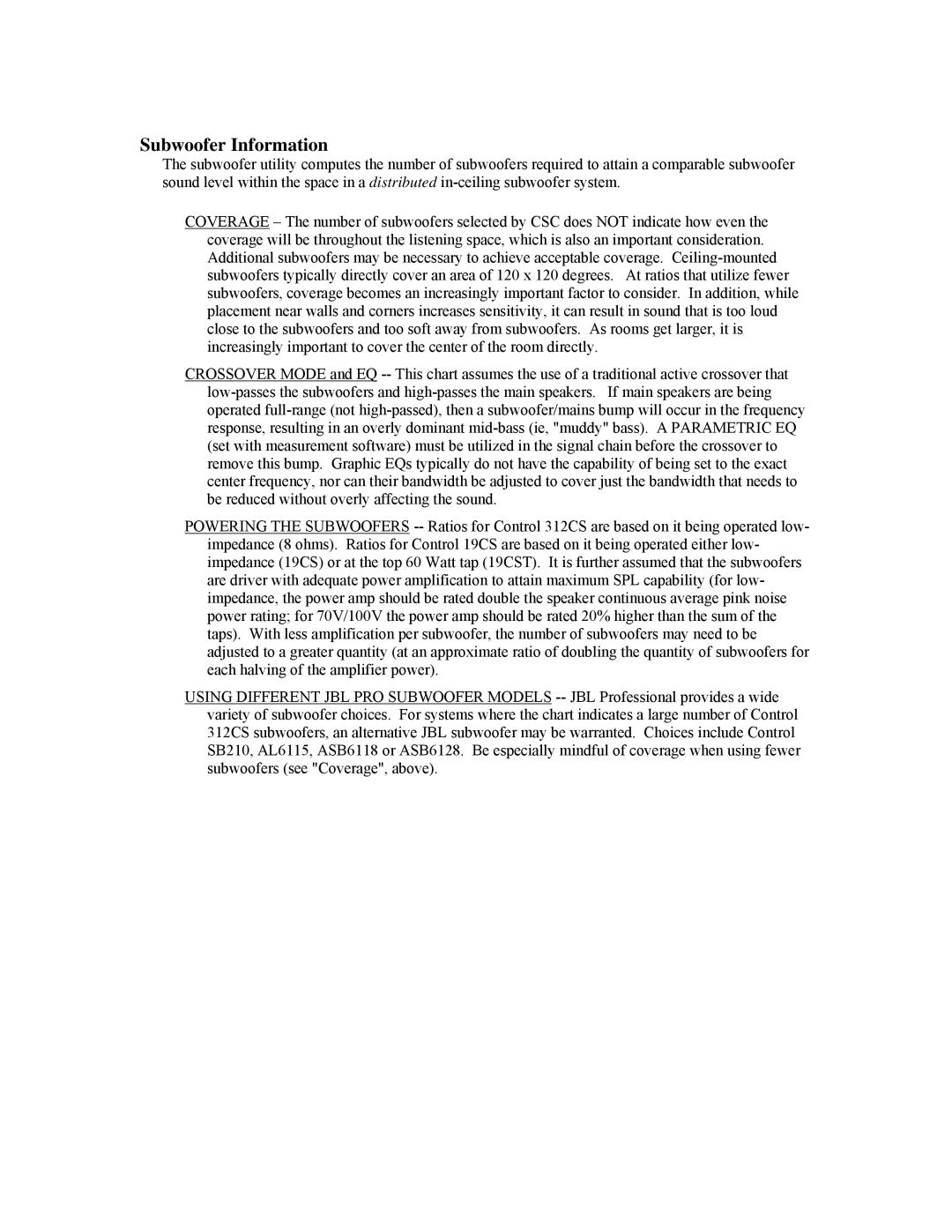Speaker specifications
JBL Professional speakers represent the pinnacle of audio innovation and engineering, catering to a range of professional audio applications. Renowned for their superior sound quality and robust design, JBL speakers are widely used in concert venues, recording studios, and broadcasting.One of the key features of JBL Professional speakers is their ability to deliver exceptional clarity and power across a broad frequency range. This is achieved through advanced transducer technology, where high-quality drivers are engineered to produce detailed highs, natural mids, and impactful lows. JBL's patented Waveguide technology further enhances sound dispersion, ensuring that audio reaches every corner of the venue without losing fidelity.
Durability is another hallmark of JBL Professional speakers. Many models are constructed using tough materials and are designed to withstand the rigors of touring and live performances. Reinforced enclosures help to reduce unwanted vibrations, providing a stable platform for sound projection. This rugged build, combined with weather-resistant elements in select models, makes them ideal for both indoor and outdoor applications.
Integration with modern technologies is crucial for professional audio equipment, and JBL Professional speakers are no exception. Many models feature advanced digital signal processing (DSP) capabilities, offering precise control over sound tuning and equalization. With built-in Bluetooth connectivity, users can stream audio wirelessly from their devices, simplifying setup and enhancing flexibility during performances.
Another notable characteristic of JBL Professional speakers is their versatility. They come in various configurations, including portable, powered, and passive models, which cater to different setups and environments. From compact speakers for small venues to high-output systems for large concerts, JBL offers a solution for every professional audio need.
Acoustic optimization is also at the forefront of JBL's design philosophy. Many speakers incorporate features like automatic EQ settings and feedback suppression, allowing for seamless integration into diverse sound systems. This ensures that audio professionals can achieve optimal sound in real time, regardless of the environment.
Ultimately, JBL Professional speakers stand out in the marketplace due to their unparalleled sound quality, robust construction, and cutting-edge technology. Whether it's a live performance, recording session, or event production, JBL continues to be a trusted name in professional audio, delivering exceptional performance and reliability.
